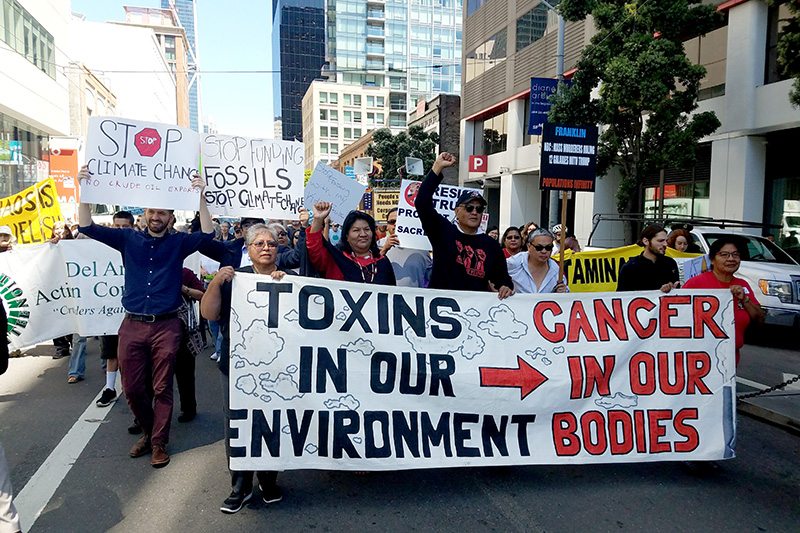The United States Environmental Protection Agency (EPA) defines environmental justice as “the fair treatment and meaningful involvement of all people regardless of race, color, national origin, or income, with respect to development, implementation, and enforcement of environmental laws, regulations, and policies.” Fair treatment, as defined by the EPA, means that no group of people should bear a disproportionate share of the negative environmental consequences resulting from industrial, governmental and commercial operations or policies.”
The environmental justice movement seeks to ensure that those who are affected the most by environmental hazards have the opportunity to play a meaningful role in the decision making process. While much of environmental justice focuses on hazards associated with dangerous materials being introduced into a neighborhood or the quality of land that minorities reside on, environmental justice also encompasses issues such as inadequate access to healthy food, inadequate access to safe homes, and inadequate access to safe, reliable transportation. In short, the movement encompasses economic and social equity as well as environmental safety.

The Birth of a Movement
People of color and the poor often reside on the most polluted, environmentally dangerous areas in the United States. Research and studies show that this is not a coincidence, but oftentimes a conscious decision made by business and the government, driven by racism and to a lesser extent, classism. Many people attribute the formal creation of the environmental justice movement to a North Carolina case in 1982. Trucks filled with soil that contained polychlorinated biphenyls (PCB), highly toxic compounds, had planned to dump this toxic soil into a landfill transversing the length of Warren County, one of the few counties in North Carolina with a majority African American population. The trucks were met with organized resistance by community members with protests lasting for a month and culminating in more than 500 arrests.

While the organized resistance in Warren County was the first protest to garner national attention, it was not the first event in which people of color objected to environmental hazards. In the 1960s Latino farm workers, organized by Cesar Chavez, fought for protection from harmful pesticides used on California farms in the San Joaquin Valley; in 1967 African American students protested the placement of a dangerous garbage dump in their community within the city of Houston; and in 1968 residents of West Harlem objected to the creation of a sewage treatment plant in their community. One could make the argument that the 1960s, the decade in which civil rights issues were at the forefront of the nation’s consciousness, was also the decade in which the ideas of environmental justice and environmental racism were born. Many argue that the environmental justice movement was an offshoot of the civil rights movement as leaders started to address disparities in public health services between minority and non minority communities. Regardless of whether one believes the movement originated from the civil rights protests of the 1960s or the Warren County protests in the 1980s, the past four decades has witnessed an exponential growth in research about the problem. Reports and studies commissioned by the federal government, state governments, and other non-governmental organizations has revealed that the problem is much more prevalent than once believed.
Next month’s blog will discuss the results of some of the most significant research and reports addressing the issue in the last forty years.
